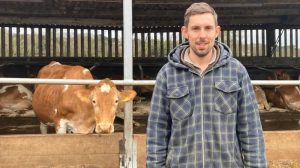
The survey, compiled by KW Feeds, was conducted amongst producers with a mix of herd sizes from 25 to 1500, with an average of 301 head. It also sent out to beef farmers asking respondents how they plan to reduce input costs. The results showed 64% aim to use less fertiliser this year, with 68% expecting to utilise the same amount of forage. None of the respondents plan to use more fertiliser.
Just over half (52%) plan to extend their forage with feeds, with the majority (78%) looking at moist feeds.
“The soaring production and input costs have put more pressure than ever before on dairy producers to control feed and input costs, with many looking to extend the grazing season and make more use of forage,” says Georgie Croxford, head of ruminant technical at KW Feeds.
However, she said feeding cows at grass introduces a different series of challenges, not least estimating grass nutritional value and supply, to maintain cow performance.
“Too often the desire to exploit low-cost grass leads to over-estimates of its feed value and dry matter intake, leading to reduced performance, especially in early lactation/higher yielding cows, as well as poorer health and fertility,” she says.
“It is important to be realistic about what can be achieved from grazed grass alone. It is fully understandable that producers want to take advantage of more grazing and extend the use of forage, but if they plan to maintain the same yield, or indeed increase their yield aspiration as in the case of 16% of our respondents, then it is important to remember that grass is not a complete feed on its own,” says Ms Croxford.
With 62% of the respondents grazing their herds, and more than half of these using a buffer feed with compound to supplement the grass, suitable complementary feeds need to be used to maximise the utilisation of the nutrients in the grass.
She added that most producers recognise moist feeds add palatability to buffer rations, which can help lift intakes. Producers can also get more from forages by looking at pre-treatments such as VistaPre-T, a fermentation extract that directly impacts fibre usage and can be formulated into the ration to get more energy from home grown forage.
Feeding beef animals for longer at grass introduces a different series of challenges, not least estimating its nutritional value and supply, to maintain growth rates.
“The danger is too many beef farmers will become over-reliant on relatively low-digestibility grass, which cannot be converted into liveweight gain as efficiently as the best dry, moist and liquid feeds.”
Instead she pointed out that complementing lower feed value feeds with the best value alternatives capable of lifting nutrient density, increasing palatability, driving intake and reducing sorting will not only increase growth rates, but also cut the cost per kg liveweight gain.
“The key is to feed what you need. Make best use of the feeds available by combining them into highly efficient, high value feeding systems. Failing to do so can add significant feed costs per kg liveweight gain,” says Ms Croxford.
“As our producers obviously recognise, moist feeds add palatability to rations, which can help lift intakes. The high energy moist distillery feed C*Traffordgold can promote very efficient growth by supplying both energy as digestible fibre, plus moisture to increase ration palatability,” says Ms Croxford.
“The survey clearly underlines producer attitudes to increased input costs, and our advice is to speak to your nutritionist to make sure you are making the most out of grazed grass and make more use of forage. Don’t over-estimate the feed value of grass and dry matter intakes,” she concludes.

























